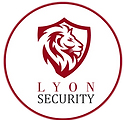Effective Strategies for Safety & Security Of Educational Institutions in South Africa
- Lyon Security

- Jul 14
- 4 min read
Updated: Aug 10
In South Africa, the safety and security of educational institutions have become a pressing concern. Schools are not just places for learning; they are where young minds are shaped and where futures are built. However, with increasing incidents of violence, theft, and vandalism, ensuring safety in education is paramount. This blog post will explore effective strategies that can be implemented to enhance security in South African schools.
Understanding the Importance in security of educational institutions
The importance of safety in education cannot be overstated. Educational institutions should provide a secure environment for students, staff, and visitors alike. A safe learning environment boosts morale and nurtures a culture of respect and cooperation. Data from various studies indicate that schools with robust security measures report lower incidents of criminal activity, which in turn facilitates improved learning outcomes.
High-stress situations can distract students and educators, ultimately hindering academic performance. For example, according to the Department of Basic Education, violence has been linked to a significant decrease in student attendance and participation rates. Thus, by emphasizing education security, schools can create a conducive learning environment that promotes academic success and emotional well-being.

Identifying Common Threats to Educational Institutions
Schools face a myriad of potential threats, including violence, bullying, theft, and natural disasters. Some of the common threats include:
Bullying and Violence: A major concern, with reports indicating that nearly one in three students have experienced bullying, resulting in emotional and psychological harm.
Theft: Theft of school property or even personal belongings is a serious issue that can lead to significant financial losses and reduced community trust.
Vandalism: Destruction of school property can often lead to increased costs for repairs and a negative image of the school.
Natural Disasters: Schools must also be prepared for environmental threats, from flooding to seismic activities, which are a part of certain regions.
By understanding these threats, schools can begin to implement effective strategies to mitigate risks and enhance safety.
What Type of Security is Most Needed for Schools?
When it comes to enhancing security in educational institutions, a multi-faceted approach is essential. Here are several strategies that can be tailored to meet the specific needs of each school:
1. Security Personnel
Hiring trained security personnel offers a visible deterrent against potential threats. A school security officer can monitor premises, conduct surveillance, and respond to emergencies. In addition, security personnel can serve as mentors and positive role models for students.
2. Surveillance Systems
Installing CCTV cameras within and around school premises provides valuable monitoring capabilities. These cameras can deter criminal activities and assist in identifying offenders if incidents occur. A comprehensive system can include:
Entrance and exit monitoring: Cameras near school gates ensure that visitors are monitored.
Classroom cameras: Limited access to classrooms can help ensure student safety.
3. Access Control
Implementing controlled access points can significantly reduce the risk of unauthorized entry. This could include:
Visitor checks: Ensure all visitors sign in and out.
Identification badges: Staff and students should wear IDs to easily identify individuals on campus.
4. Emergency Response Plans
Creating and regularly updating an emergency response plan ensures that staff and students know what to do in case of an emergency. Drills should be conducted periodically for various scenarios, such as fire evacuations or lockdown situations.
5. Community Engagement
Engaging with the local community has proven beneficial in creating a safe environment. Schools can work with local law enforcement and community organizations to foster a sense of responsibility for the safety of educational institutions.

Educating Students and Staff
Educating both students and staff about safety procedures is crucial. Training sessions that cover:
Emergency protocols: What to do in case of an active shooter or other emergencies.
Conflict resolution: Teaches students how to handle disputes peacefully.
Digital safety: Educating about online threats and responsible internet use.
Providing this knowledge empowers everyone within the school to act confidently during emergencies and promotes a culture of safety.
Leveraging Technology for Enhanced Security
Modern technology can play a vital role in bolstering education security. Here are some innovative tools and solutions that schools can adopt:
1. Mobile Apps
Many school districts are adopting mobile apps that allow parents and students to report suspicious activity or safety concerns directly to school authorities. This immediate line of communication can enhance the overall safety response.
2. Panic Buttons
Installing panic buttons in classrooms and offices provide an immediate alert mechanism during severe emergencies. When pressed, these connect directly to local law enforcement and initiate emergency protocols.
3. Drones
For schools located in remote areas, drones can provide aerial surveillance for large campuses or outdoor events. They can monitor crowds and help with the assessment of evacuations in case of emergencies.
The Role of Parents and Guardians
Parents and guardians must also play an active role in supporting safety in education. Here are some suggestions:
Stay Informed: Regularly communicate with school administration about safety policies and developments.
Participate in Safety Meetings: Attend meetings that discuss school safety and provide input on potential improvements.
Encourage Open Communication: Foster an environment at home where children feel safe discussing their school experiences and any concerns they have.
Working together with schools fosters a shared commitment to maintaining a safe educational environment.
Investing in Education Security
Investing in education security is not just a necessity; it is an obligation to protect our children. By allocating funds towards effective strategies such as enhanced security measures, staff training, and robust community involvement, we can create a safer school environment.
Schools that take a proactive stance demonstrate commitment to their students' well-being and education. As the safety of our students becomes a growing priority, it is essential that all stakeholders—educators, parents, community members, and authorities—collaborate in ensuring a secure learning environment.

Creating a safe educational environment is a multifaceted endeavor that requires commitment and cooperation from every arm of the community. In South Africa, the urgency to adopt these effective strategies for education security is growing. It is essential to foster collaboration between schools, families, and local authorities to ensure safety and educational success for all children.





Comments